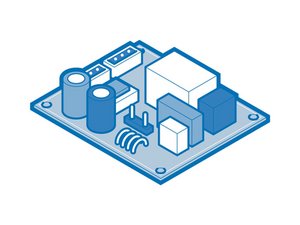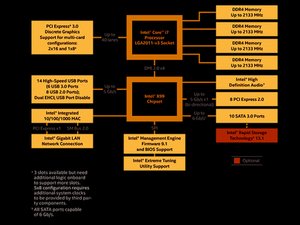A question about PCIe lanes and how they are divided
Most intel desktop processors have 16 PCIe lanes, which is just enough for an x16 GPU. Obviously, you can't use the GPU without an OS to run on, thus you will need an SSD. So now you have an x4 NVMe SSD. Because the SSD needs to have 4 lanes to operate, does the GPU go down to x8 because it doesn't have enough lanes to operate at x16?
I have noticed that many of intel's desktop chipsets for Sky and KabyLake have anywhere from 6-24 "Max # of PCI Express Lanes" when all of the processors have only 16 lanes. If you put a 16 lane i7-7700 on a Z270 motherboard with a "Max # of PCI Express Lanes" of 24, does the motherboard have its own PCIe lanes that stack on top of the processor's?
@danj I was hoping you could explain this, please.
Es esta una buena pregunta?


 31
31  58
58  42
42 




5 comentarios
what motherboard are you looking at?
- de Aiden
@captainsnowball I've built several PC's before. I understand them perhaps better than you. I'm not looking for any specific motherboard, I'm looking for a deeper understanding of how PCIe lanes work, which @danj hopefully can provide.
- de George A.
OK! I'll keep an eye on this topic, maybe I can learn something from it.
- de Aiden
when a mobo maker talks about having 24 PCIE lanes they are actually referring to HSIO. a HSIO is the same (sort of but not really) to a pcie lane. a mobo connects everything together. so a mobo maker will use 16 for the 16x pcie slot. they'll use 4 for ram. and 4 for all your sata ports, m.2 slots,usb connectivity and ethernet. thats a rough outline and not gospel as all mobo makers can budget the HSIO lanes a CPU has however they want for a particular mobo product.
thats the reason why connecting an M.2 slot ssd can disable one or more sata ports. they are using the same HSIO lanes to the cpu
- de Ben_m31
I believe the processor has dedicated lanes, and the amount of usable lanes depends on the chipset. The z370+z390 have 24 lanes. So if your using a x16 graphics card, you have 8 lanes left, which can accommodate 2 x4 ssd's. I don't believe any motherboard has two x16 slots ( they may have two x16 slots but they can only be used at x 8 simultaneously)
- de Mike c